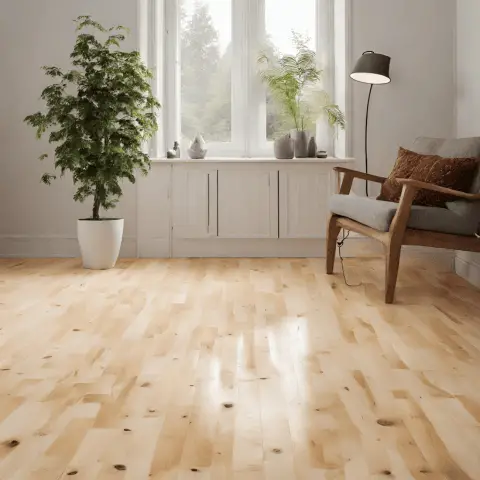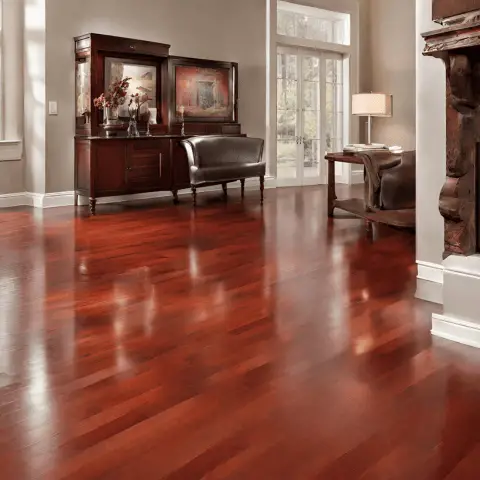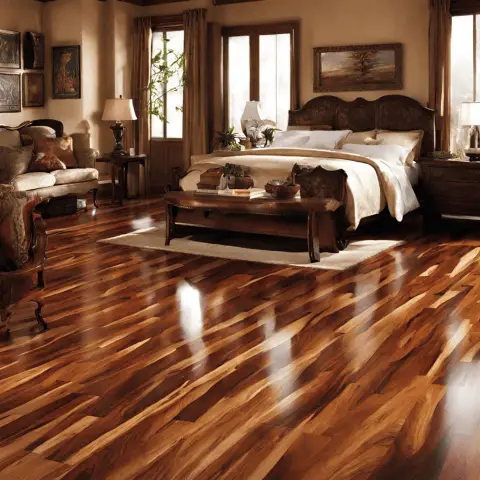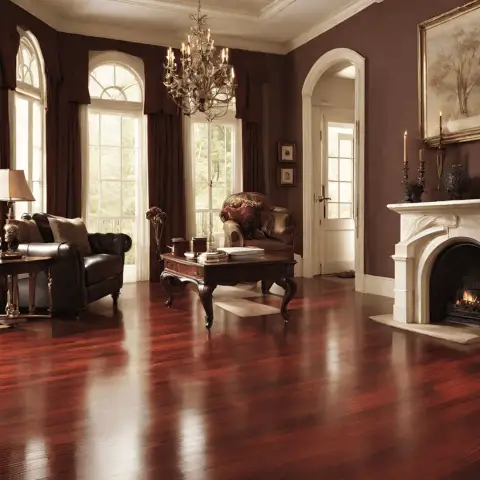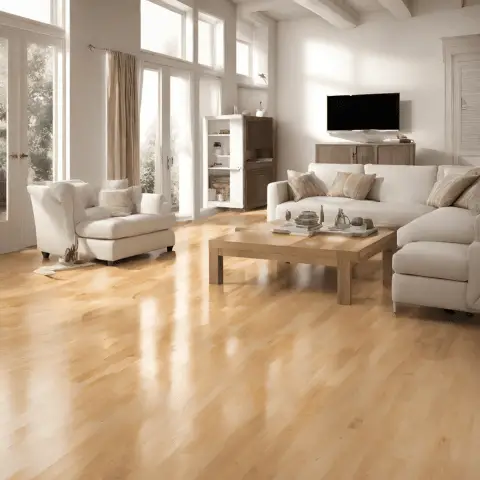How To Clean Walnut Flooring (Explained)
Sweep or vacuum regularly to remove dirt and debris. Mop with a soft, damp cloth to tackle stains and spills. Avoid harsh chemicals that can harm the finish. Polish the floors for added protection and shine. Use rugs to safeguard against heavy furniture and for style. Start your daily routine with sweeping or dusting. Use a damp mop with a soft terry cloth head as needed.
Walnut flooring, with its deep, rich hues and distinctive grain patterns, has long been a favorite choice for homeowners looking for elegance and durability.
Known for its resilience and warmth, walnut floors can elevate the aesthetics of any room. Yet, like all hardwood floors, it demands specific care to ensure its lasting beauty.
This guide delves deep into the correct maintenance techniques for walnut flooring, ensuring its luster endures for years.
Walnut, specifically the American Black Walnut, has been widely used in furniture and flooring for its combination of beauty and strength.
Scientifically known as Juglans nigra, it is one of the most sought-after hardwoods. One of the primary reasons behind its widespread popularity is its unique color variations, from light tan to deep chocolate hues, setting it apart from other hardwoods.
Moreover, the National Wood Flooring Association (NWFA) acknowledges its durability, rating it a 1010 on the Janka hardness scale. However, despite its robustness, maintaining walnut flooring requires regular care.
Materials Needed
For efficient and safe cleaning, ensure you have the following materials on hand:
- Soft broom or vacuum with a hardwood floor attachment.
- Mild wood floor cleaner (preferably one specifically designed for walnut or hardwood).
- Soft, damp cloth or mop.
- Soft, dry cloth.
- Water.
- Soft-bristled brush.
- Protective felt pads.
Steps to Clean Walnut Flooring
- Regular Dusting:
- Dust and dirt, when accumulated, act like sandpaper, leading to fine scratches on the floor. A study by the University of Arizona revealed that an average household accumulates over 40 pounds of dust annually. Acidic or colored liquids, such as wine or juice, can stain the wood if not addressed promptly.
- Blot the spill gently with a soft cloth, avoiding rubbing, which might spread the liquid or grind it into the floor.
- Damp Mopping:
- Over time, a deeper cleaning might be necessary to remove the film of grime that dusting can’t tackle. Here’s where damp mopping comes into play.
- Always use a mild wood floor cleaner, ensuring it’s walnut-friendly. The Wood Floor Covering Association (WFCA) emphasizes the importance of using specified cleaners, as general cleaners can contain harsh chemicals detrimental to walnut’s finish.
- Make sure the mop is damp, not wet. Excess water can seep into the wood, causing it to warp or leading to mold growth.
- Tackling Stubborn Spots:
- For those obstinate marks or scuffs, mild intervention is required. A soft-bristled brush can often lift the mark without damaging the finish.
- On occasion, a diluted mild detergent may be employed, but it’s crucial to ensure no residue remains.
- Drying the Floor:
- After any cleaning, especially damp mopping, dry the floor thoroughly. Water is wood’s adversary. According to the NWFA, even minor water infiltration can cause “cupping” or “crowning” in wood, degrading its appearance.
- Protection and Prevention:
- Every hardwood floor’s adversary is the sharp end of heavy furniture. But, thankfully, protective felt pads can be a savior, preventing deep-set scratches.
- High-heels, especially damaged ones, exert more psi than an elephant’s foot, making them a no-go on walnut floors. Rugs in high-traffic zones can also mitigate wear.
- Direct sunlight over prolonged periods can discolor your walnut floor. Consider using curtains or UV window films for protection.
Additional Tips
- Steam Cleaners: While they are excellent for tiles, steam cleaners can cause severe damage to walnut floors. The excessive moisture and heat can alter the wood’s structure, leading to irreversible damage.
- Products: Always cross-check the label of any cleaning product. Many generic cleaners contain elements like ammonia or bleach that can erode the walnut’s finish.
- Humidity: Wood reacts to its environment. Maintaining a humidity level between 35% to 55%, as recommended by the WFCA, ensures the wood neither dries out nor absorbs excess moisture.
- Polishes: Avoid using silicone-based or wax polishes. They can leave a residue that attracts dirt or, worse, compromise the wood’s natural ability to breathe.
Conclusion
Walnut flooring is more than just a floor; it’s an investment in beauty and durability. Its rich tones and intricate grains deserve the best care.
With the right tools and knowledge, homeowners can ensure that their walnut floors remain as exquisite as the day they were installed. Embrace the allure of walnut and relish the satisfaction of preserving its elegance through diligent care.
Sources

